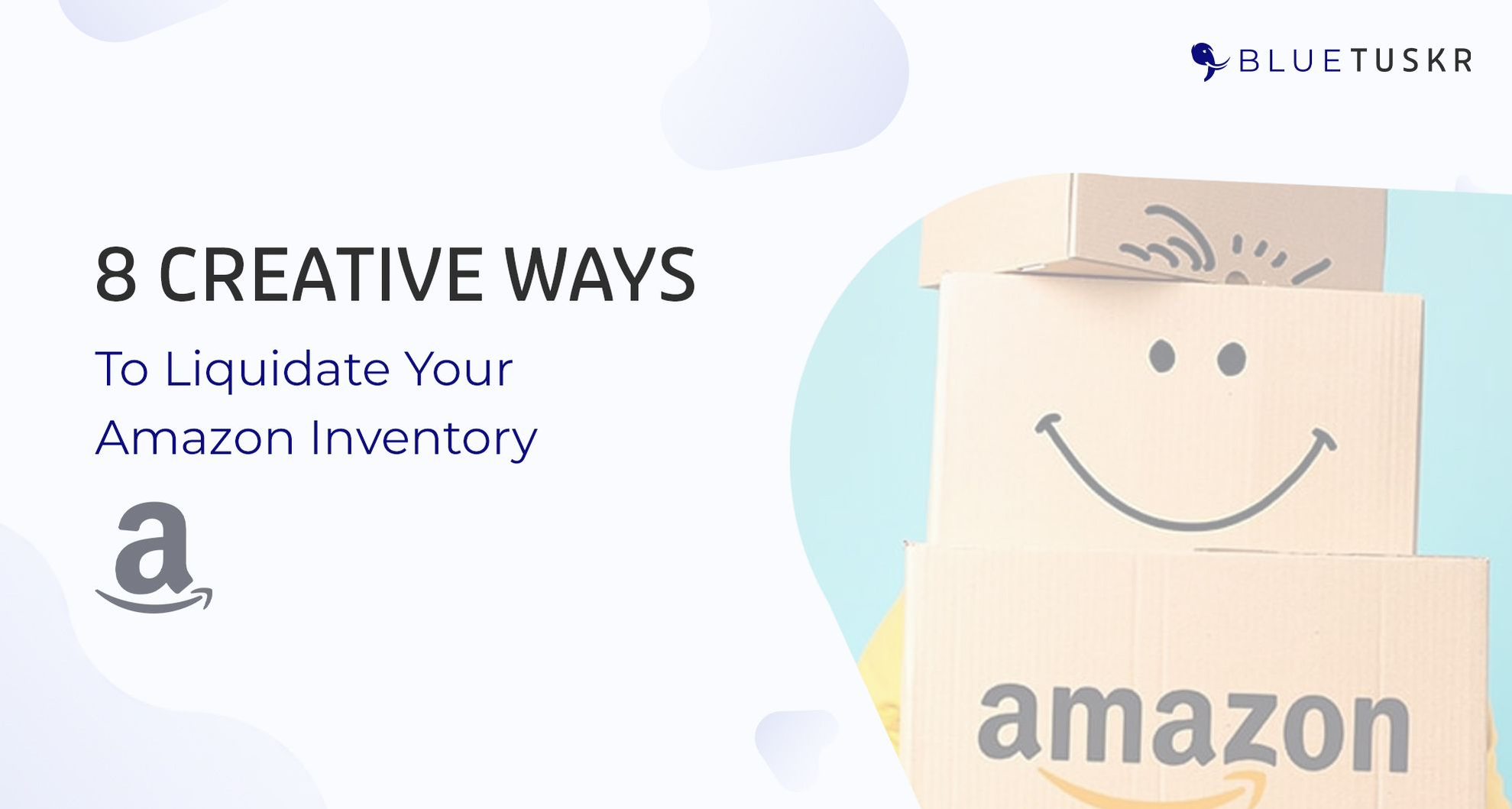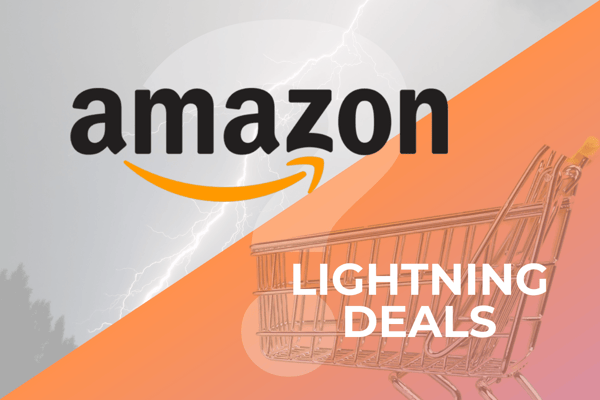
8 Creative Ways to Liquidate Your Amazon Inventory - Updated 2023
At some point, nearly every Amazon seller is going to need to liquidate some inventory. Maybe you overestimated the demand for a particular product or underestimated the appeal of your competition. Maybe the market shifted, causing a once enticing product to fall out of favor with consumers, or a newer, better version became available, causing consumers to focus there instead.
Regardless of the reason, having an effective approach when you need to liquidate Amazon inventory is a must. That way, you can proceed quickly and efficiently, allowing you to get products out of the warehouse and, whenever possible, into the hands of paying consumers.

Why You May Need to Liquidate Amazon Inventory
Some new e-commerce sellers may be wondering, why would you ever need to liquidate Amazon inventory? If you’re a dropseller that’s part of the FBA program, do you need to worry about that?
Generally, the biggest reason why you may need to liquidate your Amazon inventory is fees. Since your products are sitting in an Amazon warehouse, you’re paying Amazon to hold them.
When you keep a poor seller at the Amazon warehouse, your losing money on items that aren’t selling. Along with monthly storage fees, you could get hit with long-term storage fees as well. That’s why liquidating might not just be important, but an outright necessity.
By liquidating, you free up capital. You aren’t throwing money at products that aren’t selling. Even if you don’t make a significant profit when you liquidate, that’s better than paying to keep it stored.
Plus, you might be able to make a little bit extra, boost brand awareness, or help your community. There are a surprising number of possibilities worth considering, including the eight creative ways to liquidate your Amazon inventory listed below.
8 Creative Ways to Liquidate Amazon Inventory

1. Try an Amazon Lightning Deal
Amazon Lightning Deals let you offer your product at a discount while also putting the deal front-and-center. When used properly, it can be an excellent way to reduce inventory excesses on products that have at least some demand.
With an Amazon Lightning Deal, you do have to pay an additional fee. That means you need to determine if you can reasonably sell the number of items it will take to cover that cost, at a minimum. If it’s possible, it could be worth trying. If not, you can always just go with a price reduction and maybe boost visibility with some Amazon advertising campaigns.

2. Embrace the Bundle
If you have an item that’s selling well that relates to your slow-selling product, consider creating a bundle. It lets you take advantage of the best-selling item's reputation and desirability, giving you a unique way to move inventory that’s stagnating.
At times, a bundle can also draw additional attention to the slow-seller. If customers begin reviewing it favorably, that could make it more enticing, generating more sales of the single product as well.
The key is to make sure the products have a clear, undeniable connection. It isn’t going to work if you try to pair a top-selling mixing bowl with a low-selling baby blanket. But if you pair that baby blanket with a top-selling bib set, you’ve got something.
3. Make It a Free Gift with Purchase
Similar to the option above, but usually with a smaller profit margin, turning your low-selling item into a free gift that comes with a second product could help you liquidate your Amazon inventory. This could work for low-cost items, especially if you have a clear pairing with a best-seller.
About 90 percent of shoppers say that they are at least somewhat inclined to buy more from a retailer in the future once they’ve received a free gift. Plus, about 65 percent who get a free gift are at least somewhat likely to talk about their experience online with others. Usually, those statistics apply to unexpected freebies, like product samples, but there’s a strong likelihood it provides at least some benefit otherwise.
Additionally, if that top-seller is a strong enough offering, you might be able to bump up its price slightly to boost overall profitability. Just make sure you only go that route if the market can support it. Otherwise, you could just find yourself with bigger problems to overcome.
4. Sponsor a Giveaway
While Amazon doesn’t have its own giveaway service any longer, that doesn’t mean a sweepstakes isn’t the answer. By partnering with bloggers, social media influencers, and similar people, you may be able to draw attention to your product in exchange for a few heading out the door for free.
In most cases, you’ll have to provide one of the items to the sweepstakes partner. That way, they can try it out and discuss its virtues. Then, you’ll have to be willing to give another one to a sweepstakes winner, either directly or by sending a second one to the partner to mail when they’ve chosen a winner.
If you want this approach to work, it’s best to choose bloggers or influencers that have something to do with the product’s niche. You want their audience to be your target market. That way, there’s a reasonable chance that some of the people who enter and don’t win will turn into buyers instead.
You can also try handling the giveaway yourself. If you’re on at least one platform, leverage social media to your advantage. Host your own sweepstakes featuring the product you want to push.
Exactly how much it helps will vary. However, it’s an option worth considering.

5. Try Selling to a Competitor
If your products are unbranded or otherwise reasonably generic, you might be able to convince a competitor to take your inventory off of your hands. It’s not a common strategy to liquidate to someone you sell against. But if you’re a strong negotiator or want to get rid of a ton of excess stock in one go, it’s worth trying.
Overall, there are around 2.3 million active Amazon sellers, so there’s a decent chance someone there could be interested in your items. However, this approach usually isn’t going to work for products with your own branding. If your items are branded, you should probably try a different approach.
6. Reach Out to a Liquidator
Another option for offloading a slew of inventory as fast as possible is to sell it all to a liquidator. You aren’t necessarily going to get a great price and won’t have any say about what happens to the products once they are no longer yours. However, when speed is of the essence, it can be incredibly efficient.
7. Donate the Products to Charity
While donating your excess inventory might not help your wallet immediately, it’s still worth considering. First, you may be helping the less fortunate, and that can feel pretty good. Second, you may qualify for a tax break, giving you a financial incentive that may offset some losses.
If you go this route, make sure the items are relevant to the charity. That way, you’re doing the most good possible, and not just passing on your inventory issue to a non-profit that won’t be able to make use of the goods. Luckily, there are around 1.54 million non-profits in the U.S. alone, so there’s a decent chance you can find one that could benefit from your items.

8. Head to Another Platform
Sometimes a product that isn’t successful on Amazon flies off the digital shelves on other platforms. While you do have to deal with the costs associated with a removal, allowing you to officially shift the stock to another destination, it might be an expense worth shouldering if your items aren’t selling.
Exactly where you should take it depends on the product. However, you may want to check eBay, Facebook Marketplace, Walmart, Woot, Wayfair, or similar options to see if there’s potential.
Interested in Amazon listing optimization services? Contact our team at Bluetuskr, an e-commerce marketing agency.
Connect With Us
Recent Post

.png)








Tell us what you think!